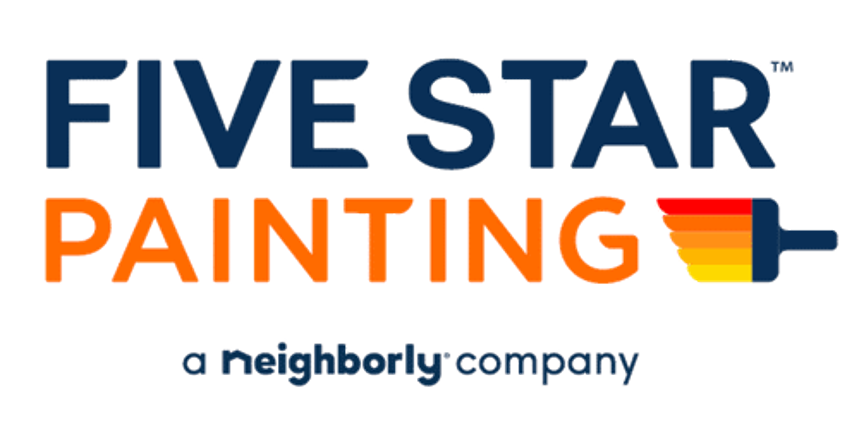
Five Star Painting highlights the priciest neighborhoods in major U.S. cities.
|
In opulent zip codes around the U.S., real estate prices reach astronomical figures, driven by a complex mixture of scarcity, demand, and the cachet of location. Despite broader market uncertainties, homes in luxury neighborhoods in states like California, Florida, and New York have not only held their value but have seen significant price increases in recent years.
To better understand the luxury real estate market, Five Star Painting analyzed the Zillow Home Value Index (ZHVI), which includes home value data for over 21,000 neighborhoods, to pinpoint the priciest neighborhoods in the 50 largest U.S. cities and nationwide. From the celebrity-studded enclaves of Beverly Hills to the historic, cobblestoned streets of Boston's Beacon Hill, we identified the most expensive neighborhoods and those where home values are rising (or falling) the most.
The Priciest Neighborhood in 50 Major U.S. Cities
Examining the priciest neighborhoods within the 50 largest cities, the following are the most expensive, according to typical home values:
- Bel Air in Los Angeles, CA: $3,755,127
- Presidio Heights in San Francisco, CA: $3,557,537
- Tribeca in New York, NY: $3,404,856
- Broadmoor in Seattle, WA: $3,243,265
- Woodland-Normanstone Terrace in Washington, D.C.: $3,060,563
Bel Air is the most expensive neighborhood in Los Angeles, with average home values among the highest in the nation (over $3.7 million) due to its exclusivity, spectacular views, and luxurious properties. The limited availability of properties in Bel Air, combined with high demand from wealthy buyers, continues to drive up home values — Bel Air home values experienced a 3.42% increase over the past year. Elon Musk, Trevor Noah, and Beyoncé are just a few of the celebrity figures that have called Bel Air home.
Following closely is the Presidio Heights neighborhood in San Francisco and Tribeca in New York, (both with typical home values over $3.4 million). Broadmoor, an exclusive gated community in Seattle, and Woodland-Normanstone Terrace, a neighborhood of stately homes close to Georgetown in Washington, D.C., round out the top five, with average home values from $3-$3.25 million.
When looking at the priciest neighborhood within each of the 50 largest cities, here are the neighborhoods where home values are growing the most:
- Blackstone in Providence, RI: 7.45%
- West End in Hartford, CT: 7.39%
- Lake Nona Estates in Orlando, FL: 7.02%
- South-West Coconut Grove in Miami, FL: 7.00%
- Tremont in Cleveland, OH: 6.29%
With the typical home value over $825,000, Blackstone is the most expensive neighborhood in Providence, RI. Moreover, Blackstone home values experienced a 7.45% increase over the last year. This growth is not unexpected, considering Providence was ranked as the fifth hottest housing market of 2024 in a recent Zillow report. This historic neighborhood is known for its well-preserved architecture and proximity to notable institutions like Brown University and the Rhode Island School of Design.
Two of the five neighborhoods where home values are growing the most are in Florida –– Lake Nona Estates in Orlando and South-West Coconut Grove in Miami, where home values increased by 7% over the past year. Orlando was ranked as the ninth hottest housing market of 2024 by Zillow, and in Miami, proximity to top-rated schools, boutique shopping, and a thriving arts scene makes South-West Coconut Grove a hot spot for real estate investment.
When looking at the priciest neighborhoods within each of the 50 largest cities, here are the neighborhoods where home values are dropping the most:
- Presidio Heights in San Francisco, CA: -10.32%
- Arts District in Dallas, TX: -8.55%
- Broadmoor in Seattle, WA: -6.64%
- Alkali Flat in Sacramento, CA: -6.64%
- Windsor Road in Austin, TX: -6.14%
With the typical home value over $3.5 million, Presidio Heights is the most expensive neighborhood in San Francisco. It’s also the neighborhood that experienced the largest decrease in home values over the past year (a 10.32% drop).
Two of the five neighborhoods where home values are dropping the most are in Texas –– the Arts District neighborhood in Dallas, TX (8.55% drop), and the Windsor Road neighborhood in Austin, TX (6.14% drop). This trend aligns with Realtor.com's recent 2024 forecast, which predicts a drop of over 12% in Austin home prices and more than 8% in Dallas home prices.
The Most Expensive Neighborhoods in the U.S.
Here are the 10 most expensive neighborhoods in the U.S., according to typical home values:
- Gables Estates in Coral Gables, FL: $16,806,342
- Port Royal in Naples, FL: $16,233,953
- Beverly Hills Gateway in Beverly Hills, CA: $10,229,822
- Old Cutler Bay in Coral Gables, FL: $9,301,986
- The Flats in Beverly Hills, CA: $8,743,865
- Di Lido Island in Miami Beach, FL: $8,537,501
- Aqualane Shore in Naples, FL: $8,507,397
- Trousdale Estates in Beverly Hills, CA: $8,500,015
- San Marino Island in Miami Beach, FL: $8,496,184
- Bear's Club in Jupiter, FL: $8,385,889
Among the most expensive neighborhoods in the U.S., seven are located in Florida, mainly around Miami and Naples, while three are found in California, all within Beverly Hills.
With the typical home value close to $17 million, the Gables Estates neighborhood in Coral Gables, FL (a suburb of Miami) is the most expensive in the U.S. Nestled along Biscayne Bay, Gables Estates is a pristine gated community offering residents both privacy and panoramic water views. The neighborhood also includes world-class amenities like golf courses, tennis courts, and a private yacht club with membership application fees starting at $100,000.
The Port Royal neighborhood in Naples, FL is the second priciest neighborhood in the U.S. with home values averaging $16.2 million. Port Royal home values also experienced a 2.42% increase over the past year. The real estate market in Naples, particularly in Port Royal, has shown resilience and growth, attracting investors and buyers from around the world.
With the typical home value over $10.2 million, Beverly Hills Gateway in Beverly Hills is the third priciest neighborhood in the U.S. The neighborhood is known for its Mediterranean-style homes and unrivaled luxury. In the average home, you’ll find expansive wine cellars, home theaters, state-of-the-art security systems, and well-manicured gardens.
Full Data
Curious about the top three priciest neighborhoods in America’s largest cities? We’ve compiled our full data study for all 50 U.S. cities analyzed into the interactive data table below. Search for the city you call home, or click on the heading of each column to sort by that category.
Closing Thoughts
As we've journeyed through the priciest enclaves from coast to coast, it's clear that the allure of these areas lies not just in their price tags, but in the unique qualities that make them coveted places to live.
Homeowners in America’s most expensive neighborhoods know that the secret to preserving their property's value lies in meticulous upkeep. Therefore, using professional painting services becomes not just a cosmetic choice, but a crucial part of a homeownership strategy. Enlist your local Five Star Painting team to refresh your walls with a new coat of paint and enhance your home’s value.
Methodology
To find the priciest neighborhood in 50 of America's largest cities as well as the priciest neighborhoods in the U.S., overall, we used the Zillow Home Value Index (ZHVI). ZHVI is calculated as a weighted average of the middle third of homes in a given region. We compared the average 2023 and 2022 home values to find the year-over-year percentage change in home value for each neighborhood. When looking at the priciest neighborhoods in the U.S. overall, neighborhood data was available in cities with population sizes of 10,000 or higher.
This article is intended for general informational purposes only and may not be applicable to every situation. You are responsible for determining the proper course of action for your home and property. Five Star Painting is not responsible for any damages that occur as a result of this blog content or your actions. For the most accurate guidance, contact the Five Star Painting location nearest you for a comprehensive, on-site assessment.
FAQs About America’s Most Expensive Neighborhoods
Our years of experience, attention to detail, and decades-long commitment to exceptional customer service set Five Star Painting apart from the competition. Continuing this high standard also includes using our knowledge and experience to answer your most frequently asked questions about the wealthiest neighborhoods in America.
What makes a neighborhood pricey?
Rich neighborhoods tend to be located in sought-after locations with limited availability, driving up property values and the overall cost of living. Generally speaking, the wealthiest neighborhoods in America offer a desirable lifestyle coupled with convenience and strong investment potential. Here are some key factors that can make a neighborhood pricey:
- Location, location, location: Amenities like top-rated schools, parks, public transportation, employment hubs, and vibrant retail and dining options significantly increase desirability. Low crime rates and a strong sense of community also contribute. Even specific lot features like views or cul-de-sac placement can impact neighborhood prices.
- Economic health: A strong local economy with high job growth and income levels attracts more people, increasing housing demand. Conversely, limited housing supply due to geographical constraints or restrictive zoning laws tends to increase home prices.
- Neighborhood character and trends: Areas undergoing revitalization or gentrification often see rapid price appreciation as infrastructure improves and new businesses move in. Historic charm, unique architecture, and well-maintained properties also contribute to a neighborhood's appeal and higher prices.
- Market conditions: In a seller's market with high demand and low inventory, prices tend to rise. Interest rates affect affordability and buyer demand, indirectly impacting how pricey a neighborhood can become.
Are expensive neighborhoods always in big cities?
While many of the most famously rich neighborhoods are located within large metropolitan cities like New York City, Los Angeles, and San Francisco, it's inaccurate to say that expensive neighborhoods are always found in big cities.
High property values and cost of living can be found in smaller towns and even rural areas due to factors like scarcity, history, and scenery. Many desirable locations, whether a charming historic town, a coastal enclave, or a scenic mountain retreat, have limited housing stock, which can drive up prices regardless of the area's overall population.
Likewise, high demand fueled by factors like excellent schools, low crime rates, access to natural amenities (beaches, mountains, lakes), or a concentration of high-paying industries can create pricey pockets outside of major urban centers. For example, affluent suburbs with large, well-maintained properties and exclusive amenities can command very high prices.
Furthermore, the rise of remote work has allowed some individuals with higher incomes to move away from expensive city centers to smaller, more scenic locations, sometimes driving up prices in areas that were previously more affordable.
While big cities often boast numerous expensive neighborhoods due to their concentration of opportunities and amenities, the presence of unique qualities and limited housing can create equally, if not more, costly neighborhoods in smaller urban, suburban, and rural settings.
Do home prices in expensive neighborhoods always go up?
Home prices in expensive neighborhoods do not always go up. While these areas often experience strong appreciation due to high demand and limited supply, various factors can cause prices to stagnate or even decline.
Economic downturns, rising interest rates, and changes in local amenities or desirability can impact even the wealthiest neighborhoods in America. For instance, if a major employer leaves the area or if crime rates increase, demand may decrease, leading to price drops.
Market cycles also play a role. Even in desirable locations, there can be periods of price correction after significant growth. Ironically, home prices can sometimes rise higher than the market will support, leading to a lack of demand even with a limited supply. While expensive neighborhoods tend to be more resilient to market corrections, they are not immune.


